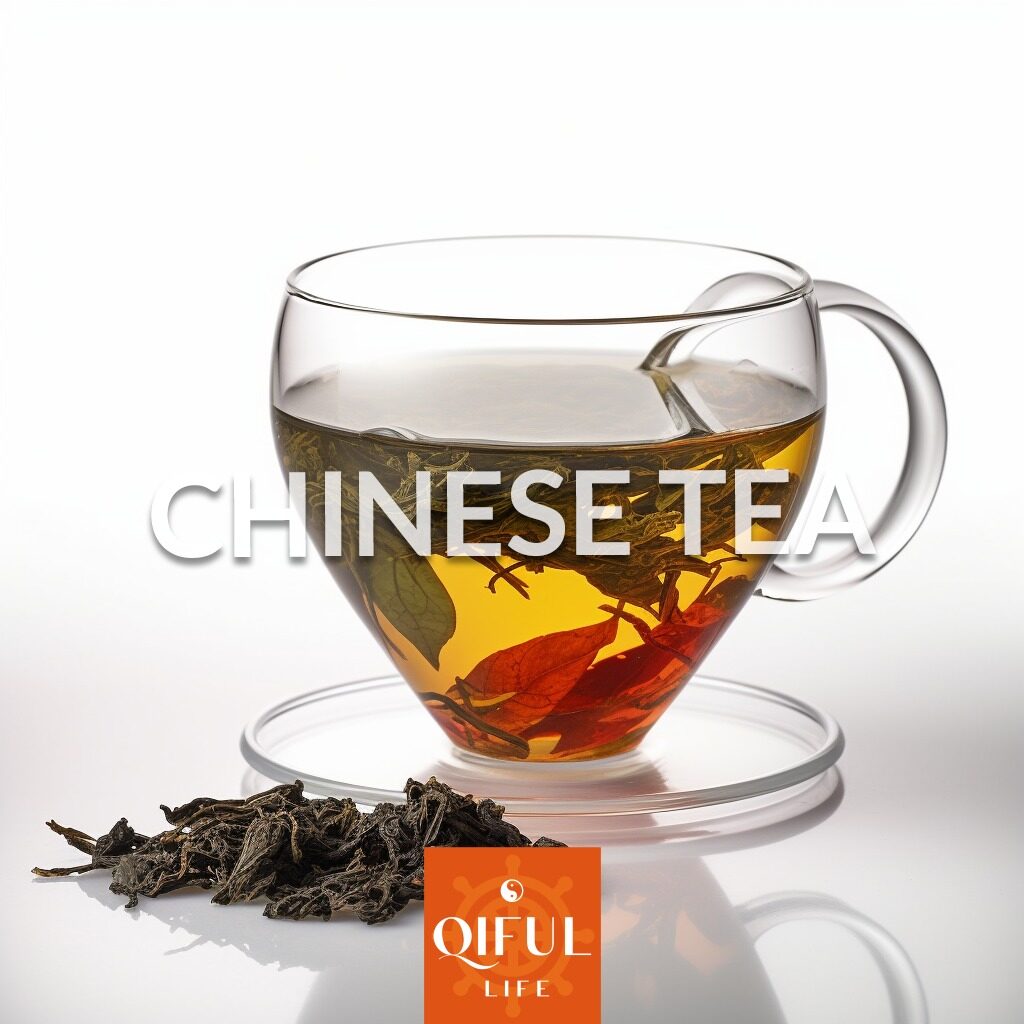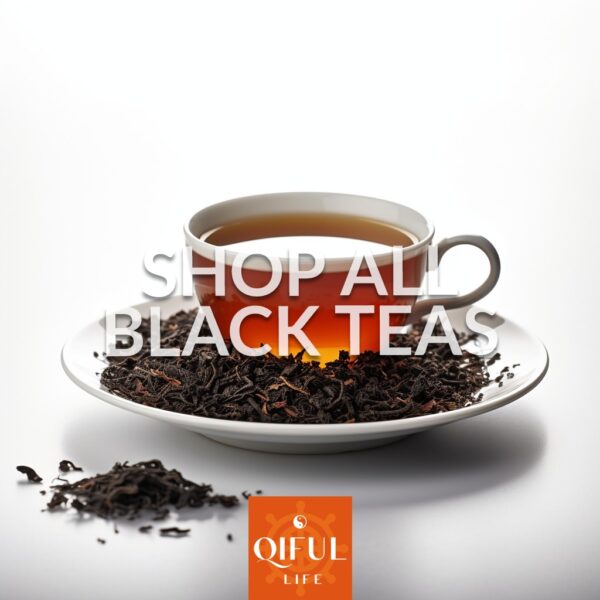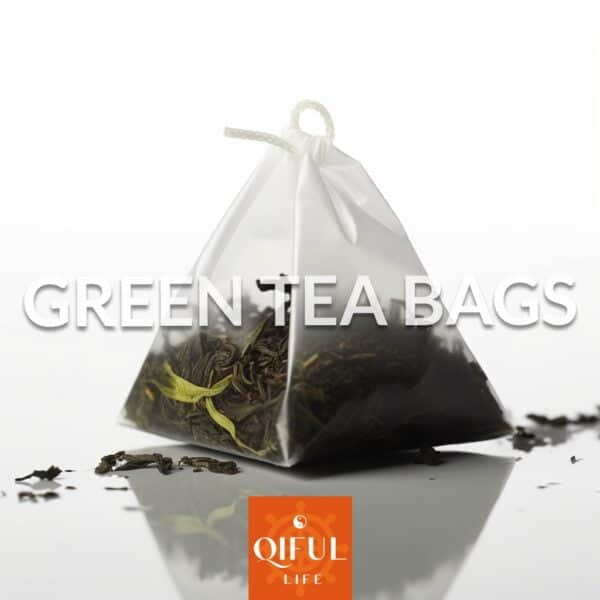China divides tea into 6 major categories: green, oolong, yellow, white, black, and dark tea. Different tea-growing regions in China produce multiple varieties within each category. Some Chinese tea varieties also break down further into types such as loose leaf, brick, cakes, and balls.
In this article, we cover every single Chinese tea category, including regional varieties and types. We also provide comprehensive tables with, oxidization levels, processing notes, and flavor notes unique to Chinese tea.
Official Chinese Tea Categories
| Tea Category | Chinese Name | Oxidation Level | Processing Notes | Flavor Profile |
| Green Tea | 绿茶 (Lǜ chá) | None to minimal | Pan-fired or steamed | Grassy, fresh, sweet |
| White Tea | 白茶 (Bái chá) | Very minimal | Withered and dried only | Floral, creamy, light |
| Yellow Tea | 黄茶 (Huáng chá) | Light to moderate | “Sealed yellowing” process | Delicate, less grassy than green |
| Oolong Tea | 乌龙茶 (Wūlóng chá) | Semi-oxidized | Fired and rolled | Nutty, floral, creamy |
| Black Tea | 红茶 (Hóng chá) | Fully oxidized | Withered, rolled, oxidized, and fired | Bold, malty, fragrant |
| Dark Tea | 黑茶 (Hēi chá) | Post-fermented | Microbial fermentation (wet piling) | Earthy, mellow, aged |
Chinese Green Tea Category
Chinese green tea undergoes zero to minimal oxidation, which makes it the least processed among all varieties. Zhejiang, Jiangsu, and Anhui primarily produce it.
Tea producers in all green tea growing regions and types in China follow the same processing techniques:
- Pluck the Leaves: Pickers pluck the bud and a couple of leaves from the stem. They do this by hand or machine, depending on the varietal.
- Wither the Leaves: They dry (wither) the leaves to remove moisture. This natural oxidization process gives green tea its unique character.
- Pan the Leaves: Workers heat the leaves in vats or pans during the panning process. This halts the withering and develops richer flavors.
Key Production Regions
Zhejiang produces Longjing or “Dragon Well,” one of the most popular varieties of green tea in China. Its sword-like leaves offer a delicate flavor and nutty aroma. Other popular types of Chinese green tea include Biluochun, also known as jade green tea; Huangshan Maofeng, grown in Anhui; En Shi Yu Lu Jade Dew, which uses steaming instead of pan-frying; and Taiping Houkui.
- Zhejiang: This eastern province grows Longjing, Anji White, Jingshan, Gunpowder, and Golden Bud and produces the highest tonnage.
- Jiangsu: The colder climate gives Jiangsu green teas (including Biluochun) a distinctive sweetness.
- Anhui: This region also produces various popular green teas, including Huangshan Maofeng and Taiping Houkui.
How to Make Chinese Green Tea
Use 3–5 grams of loose leaf tea and place it in a porcelain gaiwan or teapot. Steep for 30 seconds. Avoid using clay pots, which absorb too much fragrance.
Other 101s to Green Tea in China
All green tea in China comes in loose leaf form. Some producers use varieties such as gunpowder to create tea bags. In Yunnan province, some producers create green tea cakes, but the taste resembles an oolong.
Green tea leads all categories in China in terms of production volume and exports.
Chinese Black Tea Explained
Chinese black tea contains fully oxidized tea using both small and large leaf varieties. It appears reddish and tastes bold and fragrant. In China, people refer to this tea category directly as “Red Tea” (红茶). Historically, black tea has ranked as the most popular, particularly in exports to Europe and America.
Producers in China use the following techniques to make all black tea:
- Plucking: Workers hand or machine pluck the tea leaves.
- Withering: They place leaves on bamboo or mesh racks to dry them.
- Rolling: Rolling helps release enzymes during oxidization and enhances natural flavors, especially when done by hand.
- Oxidation: Black teas in China undergo full oxidization.
- Firing: This final step preserves oxidization and brings out the full flavor.
Chinese Black Tea Production Regions
- Fujian: This mountainous and culturally diverse region produced Jin Jun Mei, which translates as “beautiful golden eyebrows” due to its shape and color. Lapsang Souchong also comes from this area.
- Yunnan: This province borders Tibet, Laos, Vietnam, and Myanmar and produces malty and rich teas like Dianhong.
- Anhui: In addition to green teas, Anhui produces the famous Qimen Red, a delicate and smoky black tea.
Black Tea Varieties & Types in China
Chinese black tea reaches its highest quality when producers sell it as single-source varietals. Popular varieties include Jin Jun Mei, Qimen Red, and sun-dried leaves from Yunnan. Producers typically sell black tea as loose leaf but also form it into cakes or balls.
Such characteristics, processing techniques, and growing regions define China’s black tea category.
How to Make Chinese Black Tea
Use about 3–4 grams of black tea and steep it for 20–30 seconds. Use a gaiwan or porcelain teapot for more fragrant varieties, while a clay pot works well for large leaf teas.
FAQ: Is Black Tea the Same as Red Tea?
A: In China, black tea belongs to the red tea category. This topic involves a long and complex history, but the difference originates from mistranslation. In English, black tea is equivalent to red tea in China, while in other countries, red tea may refer to rooibos.
The Chinese Oolong Tea Category
Chinese oolong tea undergoes semi-oxidization and spans the broadest range of flavors and production regions. It falls between green and black teas in oxidation level.
After harvesting and oxidizing, workers fire the leaves to stop further oxidization, then roll them into pearls and dry them. Most Chinese oolongs offer nutty, floral, and creamy flavors, with flavor depth depending on oxidation level and leaf quality.
Regional Variants
- Wuyi Rock Teas (Fujian): Farmers grow rock tea or “yancha” in the Wuyi mountains. These high-grade oolongs come in strip form and undergo the highest oxidation levels.
- Southern Fujian Oolongs: Southern Fujian produces floral and fragrant Tieguanyin teas in Anxi. These teas appear in loose-leaf form with smaller strip sizes than yancha.
- Yunnan: Farmers in Yunnan experiment with oolong teas from younger tea trees. They generally reserve older trees for high-end Puerhs and use younger ones for ball-pressed or cake-style oolongs.
How to Make Chinese Oolong Tea
Use about 3–4 grams of oolong tea and steep it for 20–30 seconds. Use a gaiwan or porcelain teapot for more fragrant oolongs, while a clay pot works well for rock teas.
Chinese White Tea
White tea in China undergoes minimal processing, with no panning, rolling, or firing. Producers harvest immature buds, then wither and dry them to produce tea that tastes floral, sweet, and creamy. The brew has a straw color, while the tea’s name comes from its silvery buds and leaves.
Key Production Regions in China
Fujian leads white tea production in China, with most output coming from Zhenghe City and Fuding City. Hand-plucked Baihao Yinzhen, or White Hair Silver Needle, ranks among the most famous white teas. This lightly oxidized tea comes only from the plant’s top buds. When harvesting Bai Mudan, known for its full flavor, workers pick one shoot and two young leaves. Shoumei, harvested later and withered naturally, takes on an appearance and tastes similar to oolong.
White Tea Types in China
Fuding white tea appears in the form of balls, cakes, and loose leaf. Its leaf structure allows for versatility. Silver Needle, on the other hand, only comes in loose leaf form, since breaking it into smaller pieces or powder diminishes flavor.
Chinese Yellow Tea Classification
Yellow tea is considered its own unique tea category in China. Iy undergoes a similar process to green tea with one key addition called “sealed yellowing.” After plucking, withering, and firing, workers wrap the leaves. The leaves reabsorb their own moisture to encourage oxidation and fermentation. Producers may repeat this step multiple times before drying the tea.
The main types of yellow tea include Huoshan Huangya, Junshan Yinzhen, and Mengding Huangya. These teas taste more delicate and less grassy than green tea.
Yellow Tea Varieties in China
China remains one of the few places in the world where producers make small yellow tea squares. Junshan yellow tea from Hunan appears this way due to regional traditions in dark tea production.
Among all categories, yellow tea remains the least popular, with lower market adoption and exports. Limited flavor differences between yellow, green, and oolong tea have contributed to low consumer interest.
The Complex World of Chinese Dark Tea
Also known as fermented tea, dark tea undergoes oxidization and microbial fermentation (wet piling). Producers age it for weeks, months, or even years. The oldest teas sell at prices that rival fine wines.
Key Production Regions
- Yunnan: This region contains the market town of Puerh, which gives the tea its name.
- Hunan: The region makes Fu Brick (Fuzhuan) Tea, a fermented tea packed into bricks. This is dark tea, not Puerh.
- Guangxi: Bordering Vietnam, Guangxi makes Liu Bao, a fermented tea that tastes woody, sweet, and rich.
Scholars and tea experts have long debated whether Puerh should count as its own category since producers primarily use Camellia sinensis var. assamica instead of Camellia sinensis. Strictly speaking, it is a type of Dark Tea found in Yunnan province, according to Chinese national tea standards.
Other Information on Chinese Tea Categories
Purple tea does not count as its own category in China. Natural purple buds represent a trait of other leaf types, including Puerh, oolong, and black teas.
Summary
All Chinese tea types come from the same plant, Camellia sinensis. How workers pluck and process the leaves determines everything from flavor and fragrance to rarity and quality. Each tea offers its own merits and differences: white and green teas produce mild, grassy, and creamy notes, while black and fermented teas deliver richer and deeper flavors.
Processing Steps by Chinese Tea Category
| Step | Green Tea | White Tea | Yellow Tea | Oolong Tea | Black Tea | Dark Tea |
| Plucking | ✅ | ✅ | ✅ | ✅ | ✅ | ✅ |
| Withering | ✅ | ✅ | ✅ | ✅ | ✅ | ✅ |
| Pan-Firing | ✅ | ❌ | ✅ | ✅ | ✅ | Sometimes (shou) |
| Rolling | Sometimes | ❌ | Sometimes | ✅ | ✅ | Sometimes |
| Oxidation | ❌ to minimal | ❌ | Light to medium | Partial | Full | Post-fermentation |
| Aging | ❌ | ✅ (mild) | ❌ | ✅ (some) | ✅ (some) | ✅ (required) |
| Fermentation | ❌ | ❌ | ❌ (partial) | ❌ | ❌ | ✅ (microbial) |
Chinese Tea Types by Category
| Category | Loose Leaf | Tea Cakes | Tea Balls | Bricks | Bags |
| Green Tea | ✅ | ✅ (rare/Yunnan) | ❌ | ❌ | ✅ (Gunpowder) |
| White Tea | ✅ | ✅ | ✅ | ❌ | ❌ |
| Yellow Tea | ✅ | ✅ (rare squares) | ❌ | ❌ | ❌ |
| Oolong Tea | ✅ | ✅ (some) | ✅ (some) | ❌ | ❌ |
| Black Tea | ✅ | ✅ | ✅ | ❌ | ✅ |
| Dark Tea | ✅ | ✅ | ✅ | ✅ | ❌ |




